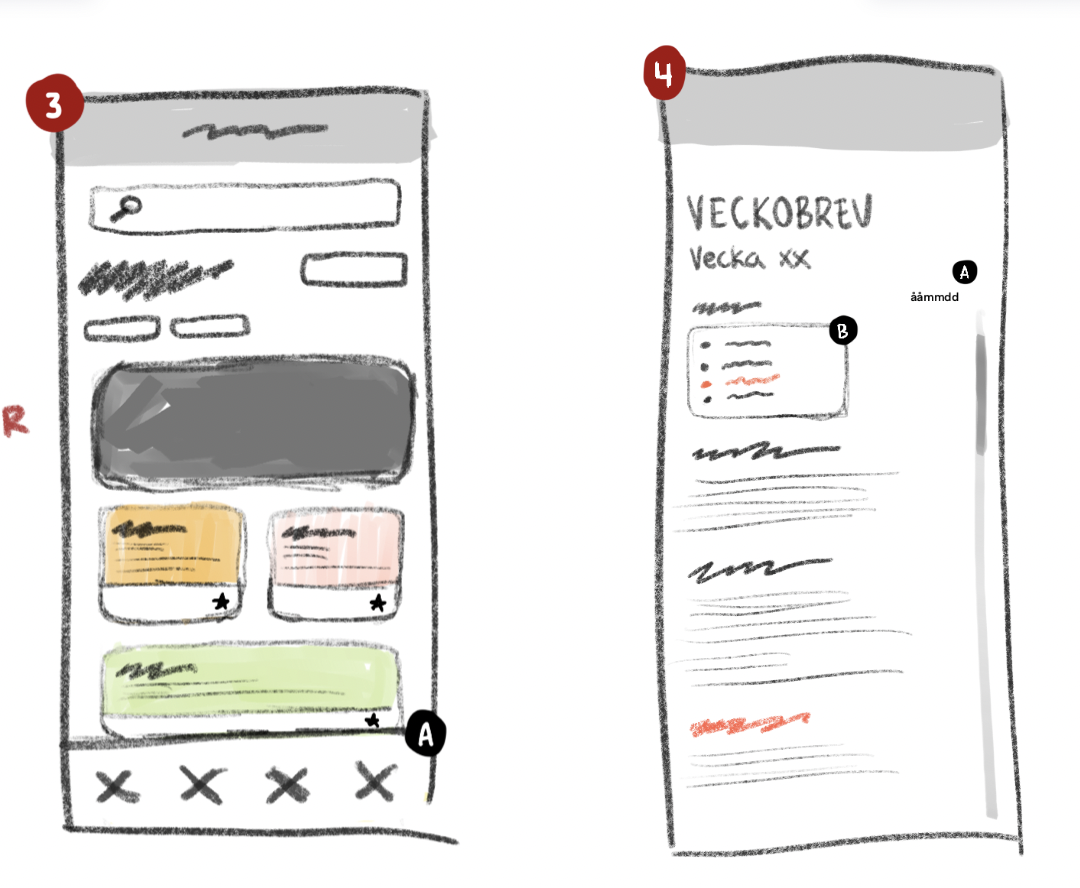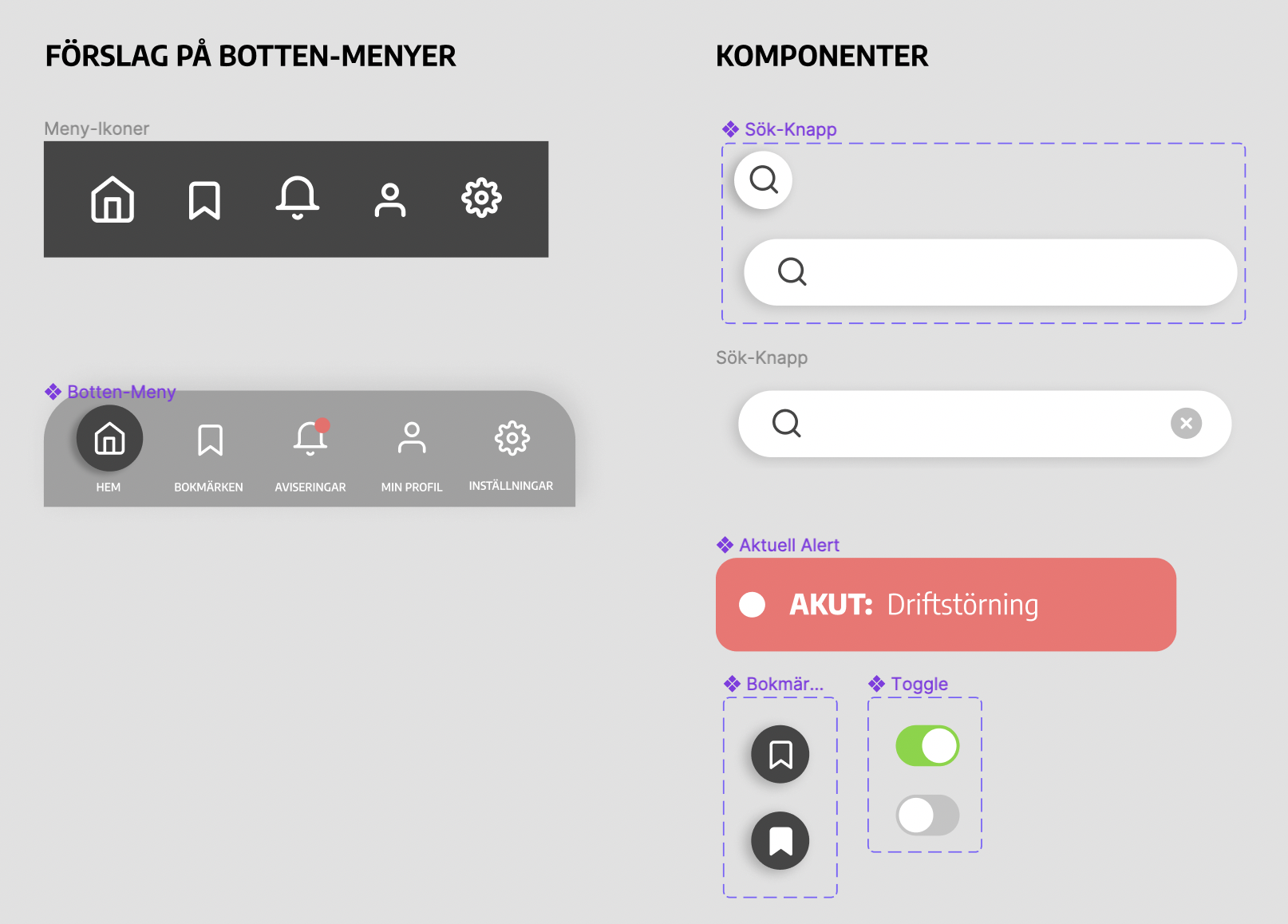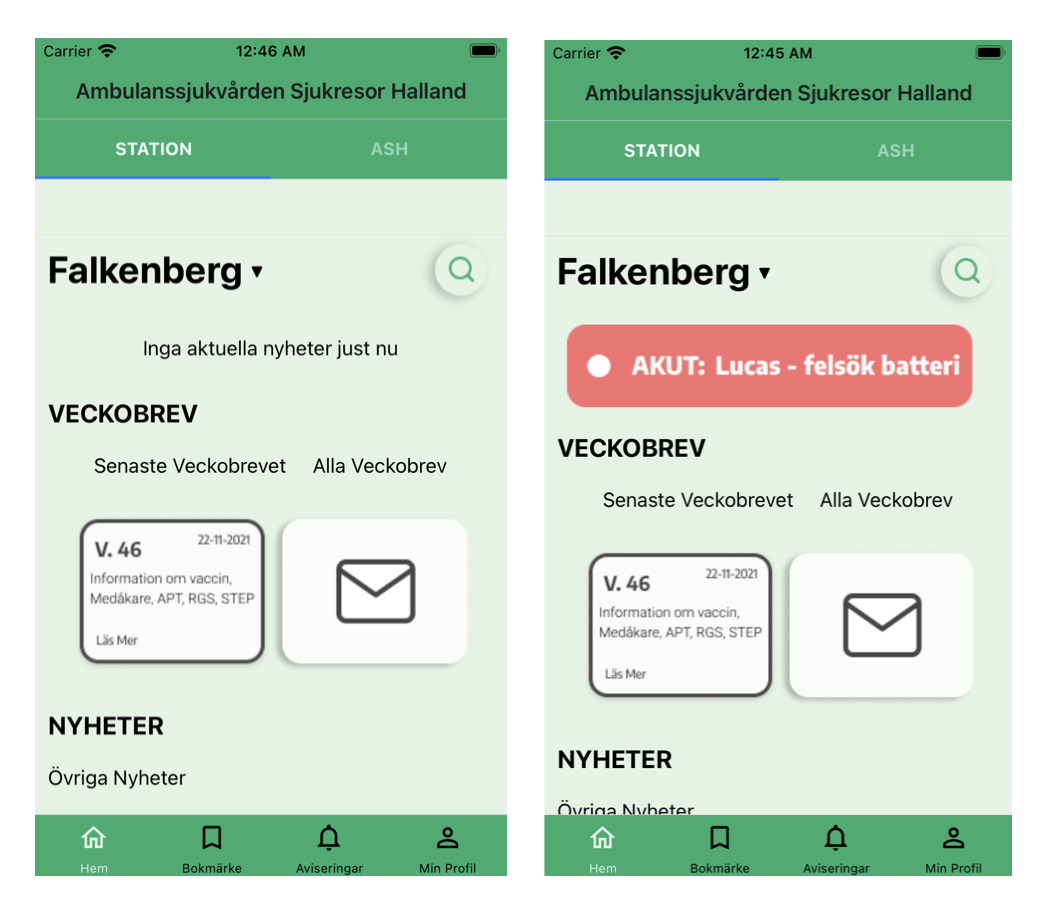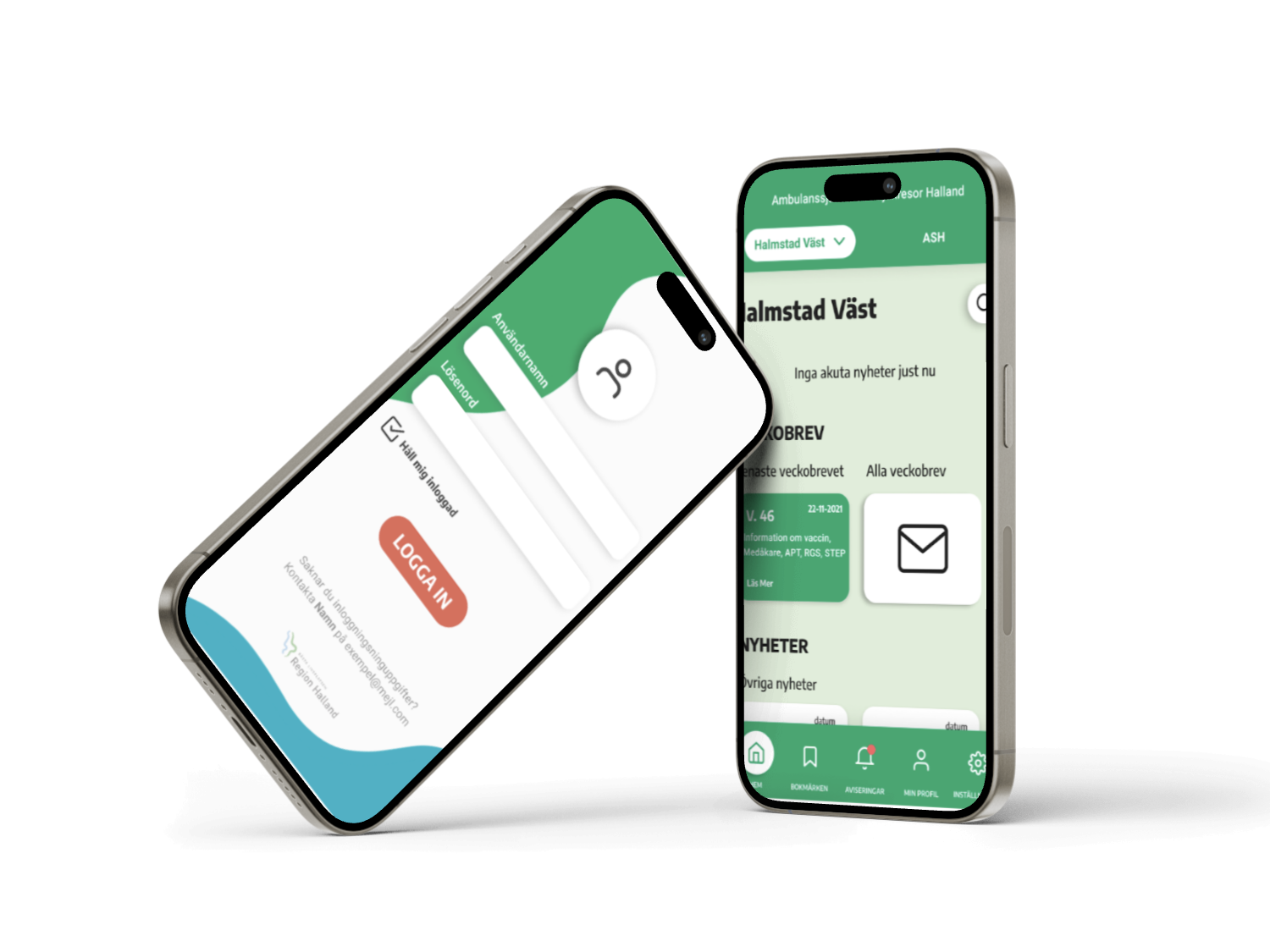Background
The client for this project was Region Halland. Their objective was to improve the accessibility of decision-support documents, treatment guidelines, and essential information for nurses during their fieldwork. The project aimed to lay the groundwork for an application focused on efficient information distribution within the organization.
| Project group | Company | Project duration |
|---|---|---|
| 5 people | Region Halland | 5 weeks |
Understanding
Our journey began with an analysis of Sweden's ambulance healthcare system, with a specific focus on the Halland region. Despite initial hurdles in accessing online resources, our research team conducted interviews with nurses and stakeholders and engaged in on-the-ground observations to gain insights into the complex dynamics of pre-hospital care. These efforts provided a comprehensive understanding of the challenges faced by nurses and the systemic issues affecting information dissemination within the organization.
Research insights
Comprehensive Understanding: Interviews with nurses revealed a reliance on a combination of physical and digital resources for pre-hospital care support. Nurses expressed a preference for digital documentation, particularly for medication updates, highlighting the need for a more streamlined and accessible information system.
Refinement of Scope: Observations within ambulance healthcare settings provided crucial context and domain knowledge, serving as a foundation for identifying pain points and opportunities for improvement. It became evident that while the organization had already acquired an application for fieldwork support, there were perceived shortcomings based on feedback from other regions. This prompted a strategic pivot, refocusing our efforts on developing an application specifically designed to address the pressing need for efficient dissemination of critical updates and guidelines.

Sketching and prototyping
Sketching We initiated the design phase with sketching sessions aimed at outlining the application's key functions. Through collaborative brainstorming, we identified requirements based on the user research, and anticipated challenges for the interface, ensuring alignment with user needs and project objectives.

Prototyping With a clear understanding of the application's requirements, we transitioned to prototyping using Figma. We began with low-fidelity wireframes, iterating on design elements based on team feedback and usability considerations. These wireframes evolved into mixed-fidelity mockups, incorporating visual elements and interactions to simulate the user experience.

Evaluation
Usability testing Usability testing served as a crucial validation mechanism for our design decisions. Conducted with five nurses at a station, the evaluation focused on assessing the prototype's information structure and visual elements' effectiveness. Key insights included the need for indicators regarding newsletter status and appreciation for a clear menu and urgent news function.
High-fidelity prototype Following usability testing, we developed a high-fidelity prototype using React Native for cross-platform compatibility. The prototype aimed to embody seamless functionality and user-centric design, incorporating feedback from usability testing to refine the user experience further.

Solution
The culmination of our research insights and design iterations resulted in a final concept that was aligned with the needs of ambulance healthcare. The solution centered around the development of an application geared towards efficient information distribution, laying the groundwork for a comprehensive platform that integrates existing channels for disseminating information and provides essential support for nurses during their fieldwork. By prioritizing seamless functionality and user-centric design, our solution aimed to empower nurses with efficient access to critical information, thereby enhancing patient care and organizational efficiency.
The solution centered around the development of an application geared towards efficient information distribution, laying the groundwork for a comprehensive platform that integrates existing channels for disseminating information and provides essential support for nurses during their fieldwork. By prioritizing seamless functionality and user-centric design, our solution aimed to empower nurses with efficient access to critical information, thereby enhancing patient care and organizational efficiency.
Contributions
Throughout the project, I've been involved in various design phases, contributing to different tasks. As part of the design team, I've conducted interviews with ASH board members and nurses, gaining valuable insights into their challenges and needs. I've also participated in observational work to gather further insights. My role included refining the project scope, evaluating existing applications, and directing the team's focus towards addressing specific challenges in information distribution. In sketching and prototyping sessions, I've played an active role in designing the application's features and interface, ensuring that identified challenges were effectively addressed. I've led and participated in usability testing sessions to evaluate prototype effectiveness and usability, using feedback to improve design.
Lessons learned
Thorough Research and Observation are Critical: The initial focus on comprehensive research, including interviews with nurses and on-the-ground observations, provided valuable insights into the complexities of Sweden's ambulance healthcare system. The lesson here is that direct interaction with stakeholders and field observations can reveal key pain points and contextual understanding, which are critical for defining the problem and guiding the design process.
Collaborative Sketching and Prototyping Enhance Creativity: Collaborative sketching sessions and prototyping using Figma allowed the team to brainstorm, visualize, and refine the application's key functions. This collaborative approach fostered creativity and ensured that design elements aligned with user needs. The learning point is that collaborative ideation can lead to more innovative and user-friendly designs.
Finding solutions in uncertainty: When our team began this project, we felt uncertain about how to address the problem in the brief. It quickly became clear that the issue was more complex than we initially thought. To navigate this, we took a step back and re-evaluated our approach, which helped us identify the real issues and adjust our focus. We realized that sometimes the brief doesn't capture the whole problem, and it's important to consider the broader context. The key lesson for our team was that embracing uncertainty and staying flexible are crucial for innovation. By questioning our initial approach and exploring different angles, we found solutions that addressed deeper issues and led to better outcomes. From my perspective, this experience taught me the value of adaptability and critical thinking. I learned that it's crucial to question assumptions and that collaboration helps find the best solutions. This project boosted my confidence in handling ambiguity and taught me to approach problems with an open mind.

